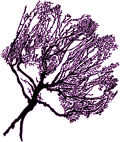Sören Miehe
PhD Candidate
Decision making in a simple laboratory task
The perception and classification of visual cues like color and shape are indispensable components for spatial orientation in the natural environment. While an animal forages for food it uses visual cues for navigating. Honeybee navigation was intensively studied in the natural environment, in spatially restricted mazes and simulated realities when flying stationary. We investigate stationary walking honeybees within a LED arena similar to that used for Drosophila melanogaster. Rotatory and translatory movements of the bee are transmitted to a styrofoam ball floating on air and measured with two laser-sensors. Single and a double stripe patterns are displayed by the LED arena. The goal of our experiments is to study a simple form of decision making. The animals first steered towards a single bright stripe directly ahead, and then needed to decide which of the two equally spaced bright stripes they will choose.
Our results show that the option to choose between two visual cues after steering towards a single cue leads to a decision process in which the bee follows just one cue after observing two options. The test bees remember which direction they had chosen before, and follow the same stripe position in a second trial ignoring the other direction. Furthermore the relative stay during the observation period leads to the direction which the bee will choose afterwards. For instance, before the bee decides to steer towards the right stripe it focuses on the right stripe as indicated by minor rotatory movements into the direction towards right. These findings indicate that future decisions are initiated by multiple transient rotatory tendencies. Future experiments will combine the behavioral task with multi unit extracellular recordings from high order interneurons in the bee brain aiming to uncover neural correlates of simple decision making processes.

